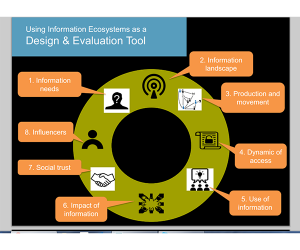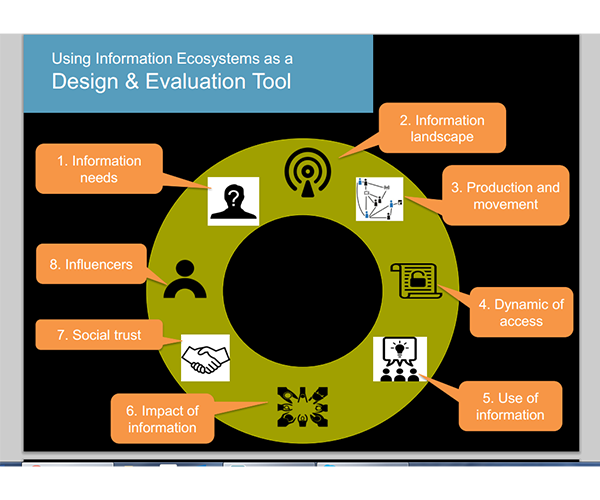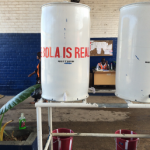Evaluating Social Media Components of Health Communication Campaigns
 HC3’s held its seventh Health Communication Innovation Webinar on Dec. 9 to offer insight into using and evaluating social media components of health communication campaigns. Moderator Matthew Heck, Program Coordinator at TechChange: The Institute for Technology and Social Change, kicked off the discussion by speaking to the potential of social media.
HC3’s held its seventh Health Communication Innovation Webinar on Dec. 9 to offer insight into using and evaluating social media components of health communication campaigns. Moderator Matthew Heck, Program Coordinator at TechChange: The Institute for Technology and Social Change, kicked off the discussion by speaking to the potential of social media.
“Regardless of your area of interest, social media has emerged an invaluable tool. With more mobile phones in the world than people, more than three billion Internet users and over two billion social media accounts, social media really offers the potential to reach a broad range of people,” he said. “For health specifically, social media has incredible capacity to raise awareness of health issues, influence opinions and begin dialogues, and fund raise both reactive and preventative causes… and that’s just to name a few.”
Why Social Media?
“With social media, organizations can get a reach that is beyond what they would achieve with any other tool by identifying the main influencers they want to target to become ambassadors of their message,” said Anahi Ayala Iacucci, Senior Innovation Advisor for the Internews Center for Innovation & Learning.
“If we’re looking to change behaviors, we should be examining the interactive part of social media and treat it not as an advertising or publishing tool but as a two-way communication system, as we can allow our audience to interact with us and the information we’re providing,” Iacucci said.
Iacucci shared a social media strategy framework created by Advanced Human Technologies that provides a snapshot of everything organizations need to consider when starting to design social media campaigns. Download the framework here. She presented two main points to keep in mind when designing social media health campaigns: the need to think about unintended consequences and the need to encourage participation and engagement.
“Setting up social media campaigns doesn’t only mean to set up a Facebook or Twitter page, it means to dedicate resources in terms of time and money to manage campaigns and make sure people can find the responses they’re looking for,” she said.
To evaluate success in developing and sustaining a campaign, it’s important to have tools and processes in place. While social media analysis can be expensive, Iaccuci provided three examples of tools available to make it possible on the smallest of budgets:
- Gephi is an open source tool that shows where information is traveling once it’s dropped on a given social media channel, and identifies conversation influencers and targets (requires in-house technical support).
- Luminoso visualizes how different online conversations are triggered by actual events happening in real time, helping to understand the relationship between online and offline worlds.
- Crimson Hexagon is an easy, simple way to look at different topics within a specific subtopic.
Telling Stories on Zero-Budget
Amy Rowland, Digital Media Strategist and Public Health Communicator at the Centers for Disease Control and Prevention, highlighted the CDC’s effort to reach target audiences with social media and improve upon its work based on measured impact. Rowland shared several examples of the organization’s use of social media in campaigns.
Launched in May 2012, the Tips from Former Smokers campaign (Tips, for short) focused on messages about the loss of quality of life, not just dying early, from smoking. Rowland explained that most smokers want to quit smoking, but believe they have time before anything happens to them, said Rowland. The campaign used many digital media strategies, both paid and earned, to spread the message. Although the campaign was well funded, Rowland emphasized the impact of low budget or no budget tools that helped make the campaign a success.
“Before one dollar was spent on paid media, we already had over 284,000 views of Tips ads on YouTube prior to the launch,” she said. “We saw a 65% increase in viral reach on Facebook with the Tips launch and reached two million unique users during a live Twitter chat that trended globally for 18 minutes.”
Sentiment and support shared on Facebook revealed the Tips campaign was resonating with its audience. CDC found it was important to give participants a way to show the progress they were making and launched a milestone gallery with badges to share indicating how long quitters had gone since their last cigarette (along with the health benefits they were experiencing).
The team used Radian 6 to measure reach, as well as Site Catalyst for monitoring web metrics like hits, page views, unique visitors and the path through the site. To capture and evaluate all Tips-related conversation and impact on Twitter, CDC’s partners at UIC used Twitter Firehose. With this data, they were able to make a strong case for greater social media integration into the CDC campaign creative.
CDC’s Public Health Nerd (#PHNerd) was another successful CDC campaign in which the organization asked people to embrace their “inner public health nerd” using Facebook, Twitter, Pinterest and Instagram channels.
“We as human beings experience a range of emotions, and it’s okay on social media to focus on some of the lightweight content that can bond a community, and this is an example of that.”
Rowland cited consistency in look and feel, recognizable design elements, creative visual storytelling and a call to action as key elements of a good graphic campaign like this one. This was a timely zero-budget campaign, science-based, actionable and visually appealing. CDC used plain language, optimized the message for social sharing, and targeted the message and channel selection.
“It was the most popular, most engaging and the highest reaching campaign of the week. And it was posted during the Ebola outbreak – proving that a good strong visual hashtag campaign can be very effective,” concluded Rowland.
Using Metrics to Revise Strategy
Sheridan Marfil, Digital Producer at the United Nations Foundation, shared how social media has helped get vaccines to children around the world as a result of the Shot at Life campaign. The campaign educates and empowers Americans to champion vaccines as a cost effective way to save children’s lives.
For the past three years, the team has run a month-long digital dialogue campaign in August, called Blogust, to bring together online influencers to help change the world through their words.
“We have 25 online writers or video bloggers who share stories based on a particular theme each year. We have a corporate sponsor that helps provide vaccines for every comment or social media share on one of these Blogust posts. So, 36,160 comments and social media shares translates directly to 36,160 vaccines,” said Marfil.
This year, the campaign team leveraged Facebook, Google+, Instagram, Pinterest and Twitter. They nearly doubled the number of comments and social media shares compared to last year, and nearly tripled the use of the hashtag on Twitter, as well as the number of likes, comments and shares on Facebook posts.
The team surpassed their goal of 60,000 by 22,453 comments and social media shares, and continues to rely on metrics to revise and improve on their strategy, selecting platforms that maximize their shares and are the best fit.
Want to continue the conversation? Visit Springboard with questions or ideas and keep the discussion going.
This webinar is the latest in an ongoing series produced over the past year and a half by the Health Communication Capacity Collaborative (HC3), a five-year global project funded by USAID and led by Johns Hopkins Center for Communication Programs in partnership with Management Sciences for Health, NetHope, Population Services International, Ogilvy Public Relations, Internews and Forum One Communications. HC3’s main objective is to strengthen capacity to design, implement and evaluate state-of-the-art social and behavior change communication programs. The Innovation Webinar Series works to help achieve this objective by spotlighting a broad range of health communication innovations and engaging a diverse audience around a meaningful mix of theory and practical examples, drawn from academic, public and private sectors.








Leave a Reply
Want to join the discussion?Feel free to contribute!